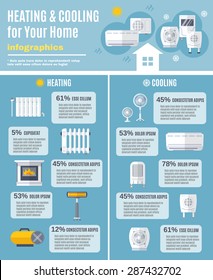The Ultimate Guide To Recognizing Heat Pumps - How Do They Function?
The Ultimate Guide To Recognizing Heat Pumps - How Do They Function?
Blog Article
https://www.wbir.com/article/news/local/five-at-four/smoky-mountain-photographer-shares-tips-for-taking-stunning-pictures/51-686a2925-b343-4228-a0fc-b9251000324f By-Roy Gylling
The best heatpump can conserve you substantial quantities of money on energy costs. heating solutions christchurch can additionally help in reducing greenhouse gas emissions, particularly if you use electrical energy in place of fossil fuels like propane and heating oil or electric-resistance furnaces.
Heat pumps work very much the like air conditioners do. air conditioning christchurch makes them a feasible choice to typical electric home heater.
How They Function
Heat pumps cool homes in the summer season and, with a little assistance from electrical power or gas, they supply some of your home's heating in the winter season. They're an excellent alternative for individuals who wish to lower their use of nonrenewable fuel sources but aren't prepared to replace their existing furnace and cooling system.
They depend on the physical truth that even in air that seems too cold, there's still energy present: warm air is always relocating, and it wants to relocate into cooler, lower-pressure settings like your home.
Many power celebrity accredited heat pumps run at close to their heating or cooling capacity throughout a lot of the year, minimizing on/off cycling and saving power. For the very best performance, focus on systems with a high SEER and HSPF score.
The Compressor
The heart of the heat pump is the compressor, which is also called an air compressor. This mechanical moving device utilizes possible power from power development to raise the stress of a gas by minimizing its quantity. It is various from a pump in that it just services gases and can't work with liquids, as pumps do.
Climatic air enters the compressor through an inlet valve. It travels around vane-mounted arms with self-adjusting size that separate the interior of the compressor, developing several cavities of varying dimension. The blades's spin pressures these tooth cavities to move in and out of stage with each other, compressing the air.
The compressor reels in the low-temperature, high-pressure refrigerant vapor from the evaporator and compresses it into the warm, pressurized state of a gas. This process is duplicated as required to provide home heating or air conditioning as needed. The compressor also contains a desuperheater coil that recycles the waste warmth and adds superheat to the cooling agent, transforming it from its liquid to vapor state.
The Evaporator
The evaporator in heat pumps does the very same point as it performs in fridges and ac system, transforming liquid cooling agent into an aeriform vapor that gets rid of warmth from the area. Heat pump systems would certainly not work without this vital tool.
This part of the system is located inside your home or building in an interior air trainer, which can be either a ducted or ductless device. It has an evaporator coil and the compressor that presses the low-pressure vapor from the evaporator to high pressure gas.
Heat pumps absorb ambient warmth from the air, and then use power to move that warmth to a home or business in home heating setting. That makes them a great deal a lot more power efficient than electrical heating units or furnaces, and since they're using tidy electrical power from the grid (and not melting fuel), they likewise generate far less discharges. That's why heat pumps are such great environmental options. (As well as a substantial reason they're coming to be so preferred.).
The Thermostat.
Heatpump are fantastic options for homes in cool climates, and you can utilize them in combination with typical duct-based systems and even go ductless. They're a terrific alternative to fossil fuel heating unit or traditional electric heaters, and they're a lot more lasting than oil, gas or nuclear heating and cooling equipment.
Your thermostat is the most vital part of your heatpump system, and it works extremely in a different way than a traditional thermostat. All mechanical thermostats (all non-electronic ones) work by using substances that transform size with raising temperature level, like coiled bimetallic strips or the expanding wax in a car radiator shutoff.
These strips include 2 various sorts of steel, and they're bolted together to form a bridge that completes an electric circuit connected to your cooling and heating system. As the strip obtains warmer, one side of the bridge broadens faster than the various other, which creates it to bend and signal that the heating unit is required. When the heatpump remains in heating setting, the reversing shutoff turns around the circulation of refrigerant, to ensure that the outside coil now operates as an evaporator and the interior cylinder becomes a condenser.